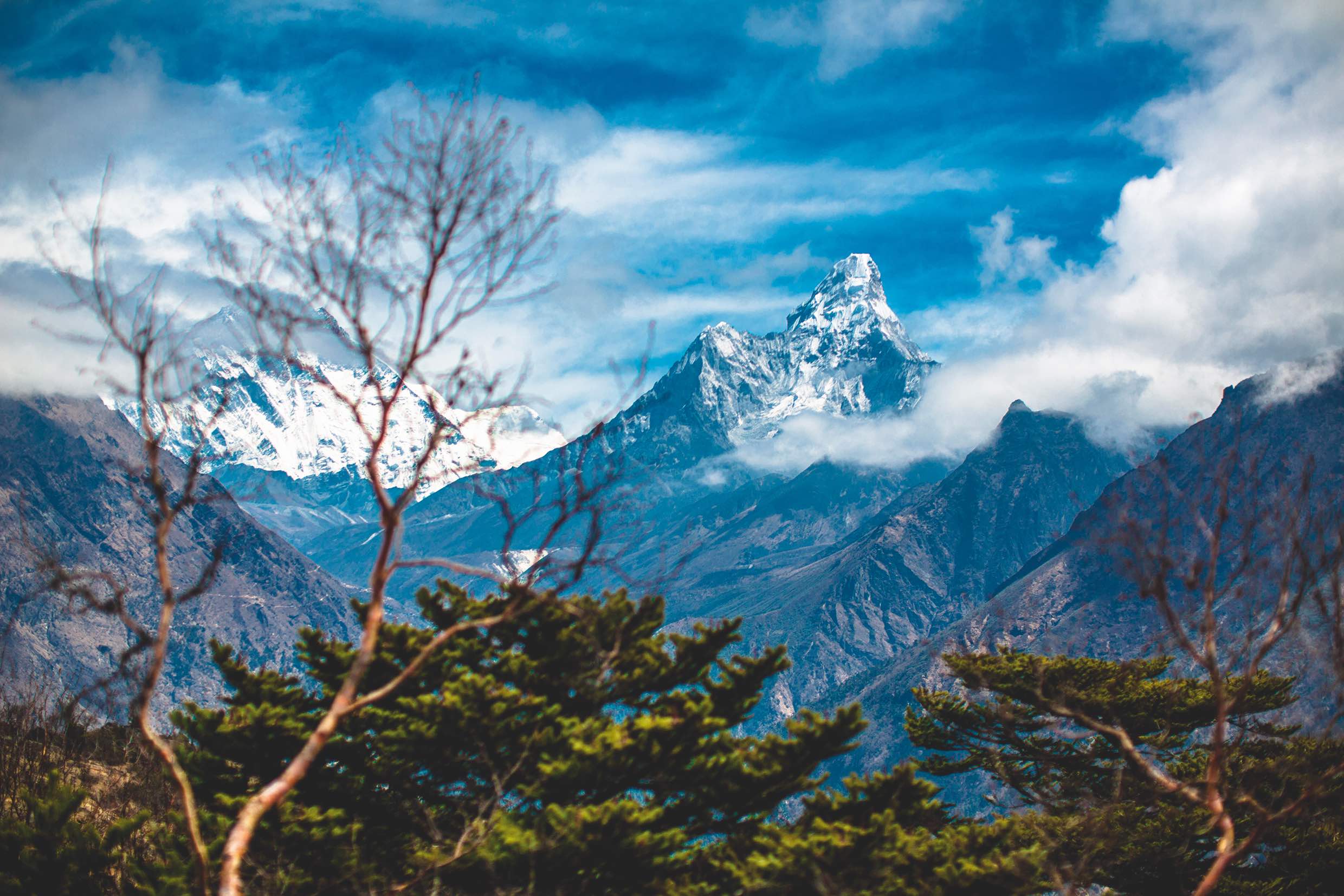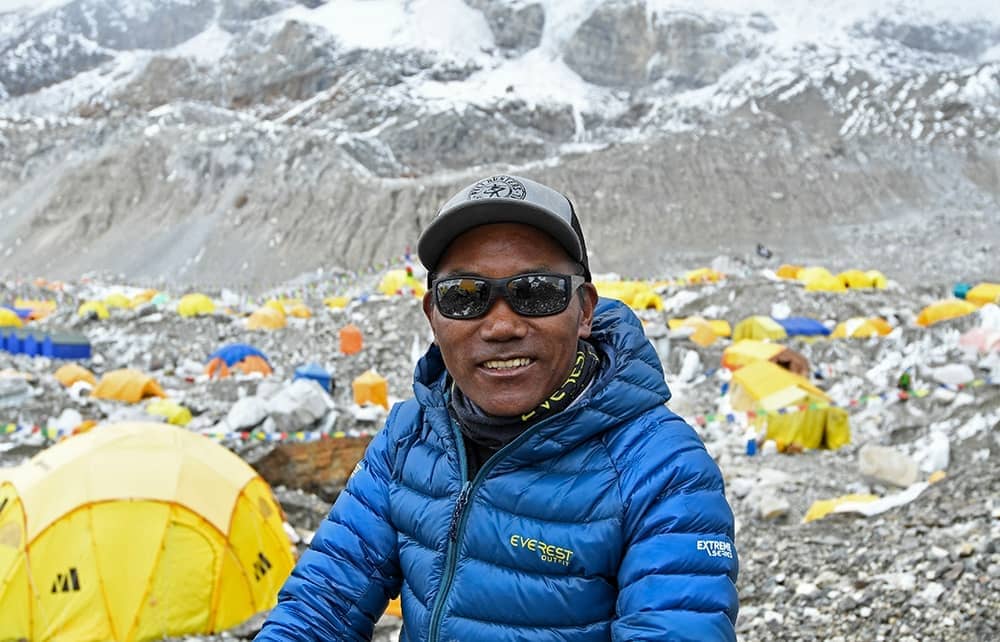John Keay has for many years been a key historian and prolific contributor to the romance attaching to the highest mountains on Earth. His latest book is described as a summation of that lifetime’s contribution, offering an overview of the Himālaya – the Sanskrit version (‘Abode of Snow’) that Keay bids us use – both as a physical place and as a realm of intellectual inquiry.
The book opens with a bang. Its first theme is the astonishing mountain-making forces that created the region. Specifically, Keay gives us the prolonged intellectual skirmishes among geologists as they tried to piece together the formative processes. The one who unpicked their genesis was the German scholar Alfred Wegener, who vanished without trace in Greenland while seeking proof for his ideas on continental drift. It would be more than half a century before an understanding of plate tectonics finally brought confirmation of his world-changing theory.
Essentially what Wegener summoned was a vision of India as a land mass, sailing at the speed fingernails grow through the Tethys Sea of the Cretaceous period. By the middle of the Eocene, roughly 40 million years ago, there was an unimaginable cataclysm as the subcontinent, docking with Eurasia, smashed and buckled the Earth’s crust from Afghanistan to Myanmar.
For thousands of years people had pondered the anomaly that a region rising to eight kilometres above sea level contained ubiquitous evidence of marine life. Ancient Hindus had long incorporated fossil ammonites in their religious symbolism and Buddhist women in Ladakh adorned their wedding finery with cowrie shells. Even at Everest’s summit, climbers are confronted with limestone formations fashioned in an ancient seabed.

The opening account of all this is a tour de force of concise exposition. But what becomes increasingly apparent is that Keay’s personal bias is not only for what he calls ‘the human component in Himalayan studies’ but for those parts of it that are largely white, militarily trained and male. One woman, however, does make a striking appearance: Alexandra David-Néel, the redoubtable French scholar of Mahayana Buddhism who visited Lhasa in 1924.
Most of the book’s stories of exploration date from the colonial period. A discussion of Himalayan botany, for example, begins with the wonderfully eccentric Colonel Frederick Bailey. His glorious exploits, including his discovery of the celebrated Himalayan blue poppy beloved of English gardeners, all date from the Edwardian period. Keay’s account of natural history more or less ends with the adventures of Frank Kingdon-Ward, another prolific English author of books about plant-hunting in the region, but whose work was done by the 1950s.
I wanted something on the more prosaic but systematic map-makers of the area’s botany, such as Oleg Polunin and Adam Stainton, whose Forests of Nepal and Flowers of the Himalaya are still available in Kathmandu’s bookshops. Equally, where are the 50 years of research on forestry and ornithology by Carol and Tim Inskipp, and by the Nepali conservation biologist Hem Sagar Baral?
It was a puzzle why a region rising so high above sea level should contain ubiquitous signs of marine life
More puzzling is the lack of any reflection on what one might call the western scholastic muddle over environmental catastrophe – landslides, soil erosion, forest clearance and biological loss – which led to prophecies in the 1970s of wholesale degradation. In fact the crisis never materialised, partly because of changes in indigenous lifestyles, especially male emigration, and partly through community forest programmes. Against all expectation, tree cover had increased from 29 to 45 per cent in Nepal’s middle elevations by 2016.
Keay’s account of the mountaineering challenges also focuses on the pre-second world war period, and especially on the Everest expeditions of the 1920s and 1930s. One fascinating aspect is how European nations vied for control of particular peaks. The Italians asserted a sort of colonial supremacy at K2; the Germans did much the same at Nanga Parbat and later, with a hiatus in British expeditions after the deaths of George Mallory and Sandy Irvine, at Everest itself. Despite these efforts, none of the parties was successful in their own nature-conquering terms. Not a single 8,000m peak had been climbed by 1939.

For an account of more recent Himalayan mountaineering, there’s Sherpa, by Pardeep Bashyal and Ankit Babu Adhikari. In the reputational rise of a small Nepali community the authors have found a subject full of astonishing derring-do and physical courage. Sherpas may once have been the dogsbodies in other people’s adventures but today they are the heroes – and, increasingly, heroines – of their own story, and their climbing abilities have made them the most famous of the Himalayan communities. Yet the Sherpa population, centred on the high valleys around Everest, numbers just 150,000 – about the same as Dundee.
One story illustrating formidable high-altitude resilience involves the climbing prodigy Mingma David. In 2013 he was dropped by rope from a helicopter at 7,000m on the upper slopes of a Himalayan peak. His mission was to rescue a Spanish climber and his Sherpa companion who had been lost for days in a white-out. Searching alone through hours of darkness, Mingma David eventually found the pair, although the Spaniard had died. But he did save the life of his countryman, who recovered after just two days in hospital.
In the early days of mountaineering, Sherpas had been just one of a number of ethnic groups supplying muscle and local know-how to western climbers. None was ever treated as an equal until the 1953 British Everest expedition– and especially the moment, captured by Edmund Hillary and transmitted to the world’s media, of Tenzing Norgay standing on the peak with flag held triumphantly aloft.
Tenzing was the first indigenous mountaineering superstar, courted by India’s prime minister Nehru and made wealthy by fame and opportunity. Yet even his lifestyle now looks modest. A second generation includes Lakpa Rita, the first Sherpa to climb ‘the seven summits’, the highest peaks in all the continents. In turn, his Everest tally of 17 summits has been eclipsed by contemporaries, one of whom, Kami Rita Sherpa, made a record-breaking 26th ascent this spring.
Alongside this reputational transformation has come a revolution in Sherpa economics. Tenzing ran his own mountain operation out of the Indian hill station Darjeeling, but the ordinary porter then earned less than 50 US cents a week. Today, porters (who are often women) receive $3-4,000 an expedition. Tourism is an important factor in the Nepali economy and Everest expeditions bring in millions to Sherpa communities. Real estate values in their largest town, Namche Bazaar, exceed those of Kathmandu, yet many guides own lodges and restaurants, offering yak steak, champagne and views of Everest.
There is a less seemly side to the changes, and not just the eight tonnes of human excrement dumped annually at Base Camp. The 600 people who climb Everest every season often have to queue beneath the summit, with dwindling oxygen, barely able to go forward or back and at the mercy of conditions. No wonder it’s called the ‘death zone’. One is tempted to ask: what on Earth motivates them?
I may have some insight. I vividly recall trekking in Nepal (in cheap Chinese plimsolls) through the upper reaches of the deepest valley on Earth, the Kali Gandaki, near a clifftop settlement called Kag Beni. It alone conjured scenes from James Hilton’s novel Lost Horizon. Escaping the oxygen deprivation of higher altitude, I was overcome by a sense of exaltation I have seldom, if ever, experienced since. The authors of these books know that feeling – of the Himālaya being the abode of the gods. Keay quotes Sir Francis Younghusband’s memories of riding out from Lhasa early last century: ‘I was beside myself with an intensity of joy and a revelation of the essential goodness of the world. I was convinced past all refutation that men at heart are divine.’






Comments